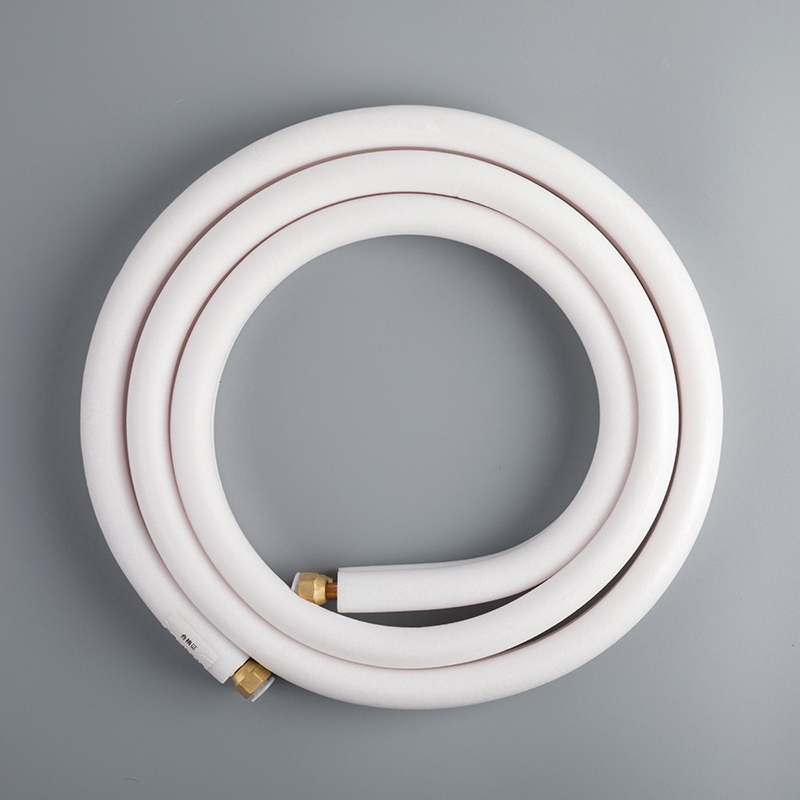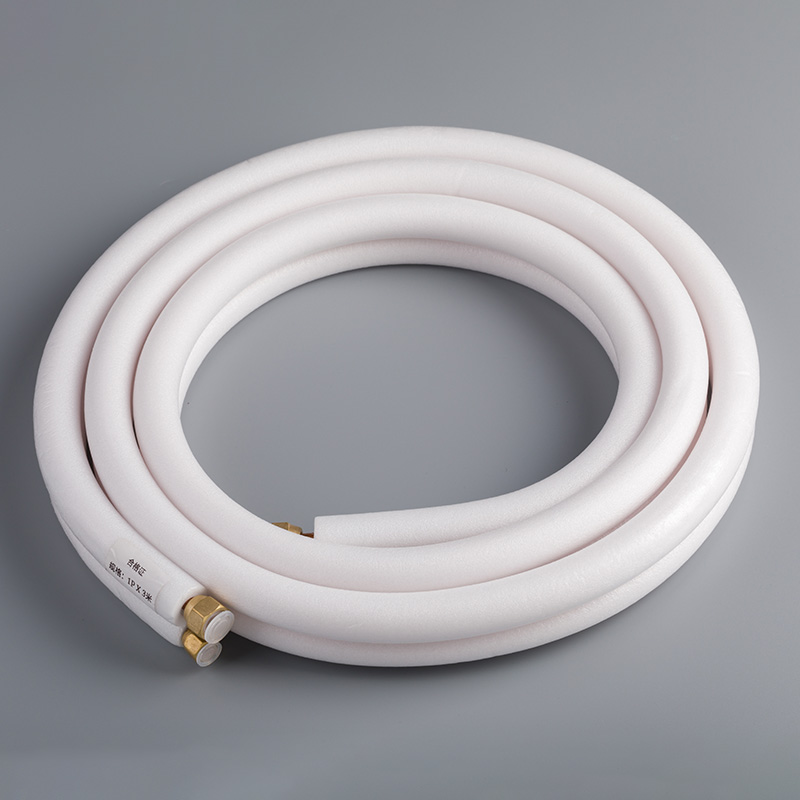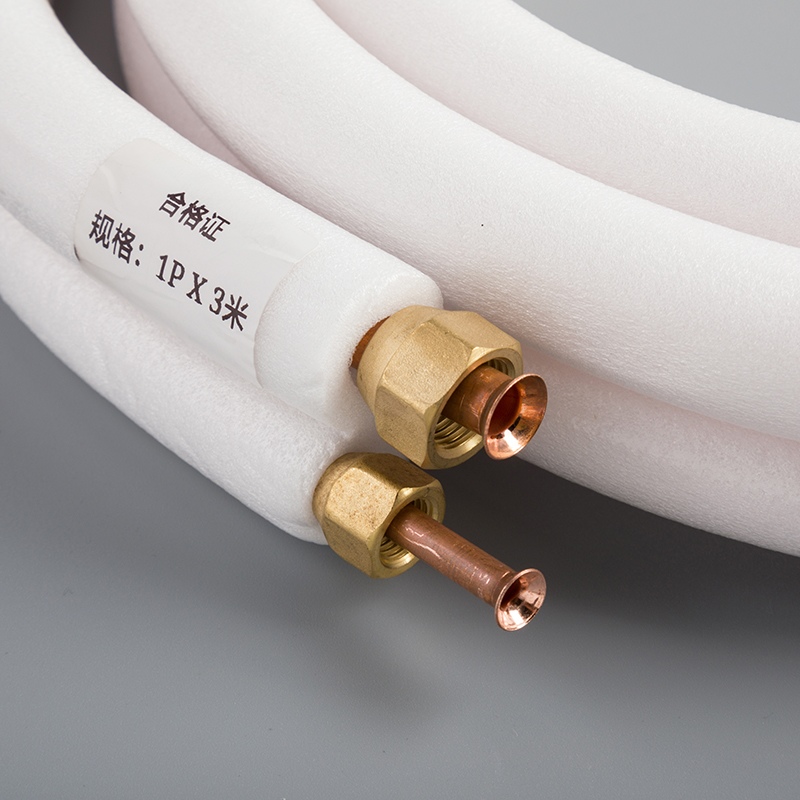Tips for Measuring Copper Pipe Size Accurately

Accurately measuring copper pipe size is essential for ensuring proper installation and avoiding expensive mistakes. Incorrect measurements can lead to project delays, rework, and unnecessary material waste, especially during plumbing tasks. In this tips blog post on "Tips for measuring copper pipe size accurately," we highlight the importance of using reliable tools such as measuring tapes, digital calipers, and pipe calipers to achieve precise results. For instance, a caliper is an excellent tool for effectively measuring both the outer diameter and the nominal size of copper pipes. Choosing the right tool for the job is key to maintaining efficiency and accuracy when working with copper pipes.
Understanding Copper Pipe Sizes

Copper pipes play a crucial role in plumbing systems. Proper understanding of copper pipe sizes ensures accurate measurements and successful installations. Each type of copper pipe offers unique characteristics suited for specific applications.
Types of Copper Pipes
Type K
Type K copper pipes have the thickest walls among all types. These pipes are commonly used for underground installations due to their durability and resistance to external pressures. Type K pipes are ideal for water distribution systems requiring high strength and reliability.
Type L
Type L copper pipes feature medium wall thickness. These pipes are widely used in residential and commercial plumbing systems. Type L pipes provide a balance between durability and cost-effectiveness, making them suitable for general-purpose applications.
Type M
Type M copper pipes have the thinnest walls compared to other types. These pipes are typically used in low-pressure applications such as drainage and vent systems. Type M pipes offer an economical solution for projects where high pressure is not a concern.
Nominal vs. Actual Size
Understanding the difference between nominal and actual sizes is essential for accurate pipe measurements. This knowledge helps avoid errors during installation and ensures proper fit.
Explanation of Nominal Size
Nominal size refers to the standardized designation of a pipe's diameter. The nominal size does not represent the actual measurement of the pipe. Instead, it serves as a reference for identifying pipe dimensions in charts and specifications.
Explanation of Actual Size
Actual size measures the true dimensions of a copper pipe. The actual size includes the outer diameter (OD) and wall thickness. Accurate measurement of the actual size ensures compatibility with fittings and other components in a plumbing system.
Scientific Research Findings: Studies emphasize the importance of measuring both the outer diameter and nominal pipe size. Accurate measurements ensure proper fit, reliability, and performance in copper piping systems.
Accurate understanding of copper pipe sizes forms the foundation for successful installations. Selecting the correct type and size of copper pipe ensures safety, efficiency, and long-term performance in plumbing projects.
Tools for Measuring Copper Pipe Size

Accurate measurement of copper pipe size requires the right tools. Each tool serves a specific purpose and ensures precision in measurements. Selecting the appropriate tool depends on the type of measurement required.
Measuring Tape
A measuring tape is a simple yet effective tool for determining the dimensions of copper pipes. The flexibility of a measuring tape allows for easy handling during the measurement process.
How to Use a Measuring Tape
Wrap the measuring tape snugly around the outer surface of the copper pipe.
Record the circumference measurement displayed on the tape.
Divide the circumference by 3.143 to calculate the outer diameter.
Verify the result by repeating the process for consistency.
A measuring tape provides quick results and works well for accessible pipes. Ensuring the tape remains tight around the pipe is crucial for accuracy.
Caliper
A caliper offers precise measurements of copper pipe dimensions. This tool is ideal for determining the outer diameter when high accuracy is essential.
How to Use a Caliper
Open the caliper's movable wing to fit the pipe between both wings.
Place the caliper around the pipe and close the wings until they touch the pipe's surface.
Read the measurement displayed on the caliper's scale or electronic readout.
Repeat the process to confirm the accuracy of the measurement.
The Pipe Caliper, made from durable black anodized aluminum, measures pipe sizes up to 16 inches in diameter. This tool is widely used by plumbers, engineers, and contractors for its reliability and ease of use. The Slide Caliper, another variant, provides an electronic readout for added convenience.
Pipe Sizing Charts
Pipe sizing charts serve as a valuable reference for identifying copper pipe dimensions. These charts list nominal sizes alongside actual measurements, aiding in accurate installation.
How to Read Pipe Sizing Charts
Locate the nominal size of the copper pipe on the chart.
Identify the corresponding actual outer diameter and wall thickness.
Compare the chart values with the measured dimensions of the pipe.
Use the chart to ensure compatibility with fittings and components.
Pipe sizing charts eliminate guesswork and streamline the selection process. These charts are essential for projects requiring precise fitting and alignment.
Pro Tip: Combining tools like calipers and pipe sizing charts enhances measurement accuracy. This approach ensures proper installation and reduces the risk of errors.
Using tools such as measuring tapes, calipers, and pipe sizing charts simplifies the process of measuring copper pipe size. Each tool contributes to achieving precise results, ensuring successful plumbing installations.
Step-by-Step Guide to Measuring Copper Pipe Size
Preparing the Pipe
Cleaning the Pipe
Clean the copper pipe thoroughly before taking any measurements. Remove dirt, grease, or debris from the surface using a clean cloth or mild cleaning solution. Ensure the pipe is dry after cleaning to prevent errors caused by residue. A clean surface allows tools to provide accurate readings.
Ensuring Accessibility
Position the copper pipe in an open and accessible area. Avoid measuring pipes located in tight spaces or obstructed by other objects. Use proper lighting to enhance visibility during the measurement process. Accessibility ensures accurate tool placement and precise measurements.
Measuring the Diameter
Using a Measuring Tape
Wrap the measuring tape around the outer surface of the copper pipe. Ensure the tape fits snugly without gaps or slack. Record the circumference measurement displayed on the tape. Divide the circumference by 3.143 to calculate the outer diameter. Repeat the process to confirm accuracy.
Using a Caliper
Place the caliper's wings around the copper pipe's outer surface. Adjust the wings until they make contact with the pipe. Read the measurement displayed on the caliper's scale or electronic screen. Verify the reading by repeating the measurement. Calipers provide high precision for measuring the outer diameter.
Measuring the Length
Using a Measuring Tape
Secure one end of the measuring tape at the starting point of the copper pipe. Extend the tape along the entire length of the pipe. Keep the tape straight and taut during the process. Read the measurement at the endpoint of the pipe. Double-check the reading to ensure precision.
Marking the Measurement
Use a marker or pencil to mark the measured length on the copper pipe. Place the mark at the exact point where the measurement ends. Verify the marked length matches the recorded measurement. Marking helps maintain consistency during cutting or installation tasks.
Pro Tip: Regular calibration of tools enhances measurement accuracy. Follow manufacturer guidelines to ensure tools remain reliable over time.
Accurate measurements play a critical role in plumbing projects. Proper preparation of the pipe and the use of reliable tools ensure precise results. Practicing these steps consistently improves skills and reduces errors when working with copper pipes.
Common Mistakes and How to Avoid Them
Incorrect Tool Usage
Common Errors with Measuring Tape
Improper use of a measuring tape often leads to inaccurate readings. Wrapping the tape loosely around the copper pipe creates gaps that distort circumference measurements. Misalignment of the tape along the pipe’s surface also results in errors. Using a damaged or stretched measuring tape compromises accuracy further. Regular inspection of the measuring tape ensures reliable performance.
Tip: Always ensure the tape is snugly wrapped and perfectly aligned to obtain precise results.
Common Errors with Calipers
Calipers, though precise, require proper handling to avoid mistakes. Placing the caliper wings incorrectly on the pipe surface leads to skewed measurements. Applying excessive pressure while closing the wings may damage the tool or the pipe. Failure to calibrate the caliper before use results in inaccurate readings. Regular calibration and careful handling maintain the tool’s accuracy.
Pro Tip: Gently adjust the caliper wings to touch the pipe without exerting force for the most accurate measurement.
Misreading Measurements
Tips for Accurate Reading
Misreading measurements often occurs due to poor visibility or lack of focus. Failing to read the scale from a perpendicular angle introduces parallax errors. Using tools with unclear or worn-out markings increases the likelihood of mistakes. Ensuring proper lighting and using tools with clear, legible scales improves reading accuracy.
Accurate reading of measurements prevents costly errors during copper pipe installations.
Double-Checking Measurements
Skipping the step of double-checking measurements frequently leads to errors. Relying on a single reading increases the risk of inaccuracies. Repeating the measurement process verifies the initial reading and ensures consistency. Cross-referencing with pipe sizing charts further confirms the accuracy of the dimensions.
Reminder: Always measure twice to avoid rework, delays, and additional expenses.
Errors in measurement significantly impact plumbing projects. Proper tool usage and careful reading of measurements ensure precision. Double-checking measurements reduces the risk of mistakes and enhances the success of installations. Accurate techniques are essential when applying tips from a blog post on "Tips for measuring copper pipe size accurately."
Accurate measurements play a vital role in ensuring the proper fit and functionality of copper pipes. Consistent precision prevents leaks, reduces rework, and guarantees reliable plumbing systems. Practicing measurement techniques regularly enhances skills and minimizes errors. Double-checking dimensions ensures compatibility with fittings and avoids costly mistakes. For achieving precision, always use calibrated tools and refer to pipe sizing charts. Following these steps ensures secure and leak-free connections. Applying these tips from a blog post on "Tips for measuring copper pipe size accurately" leads to successful installations.
See Also
The Ultimate Resource for Measuring Copper Pipe Sizes
Simple Techniques for Accurate Copper Pipe Measurement
Proven Methods to Measure Copper Pipe Effectively


